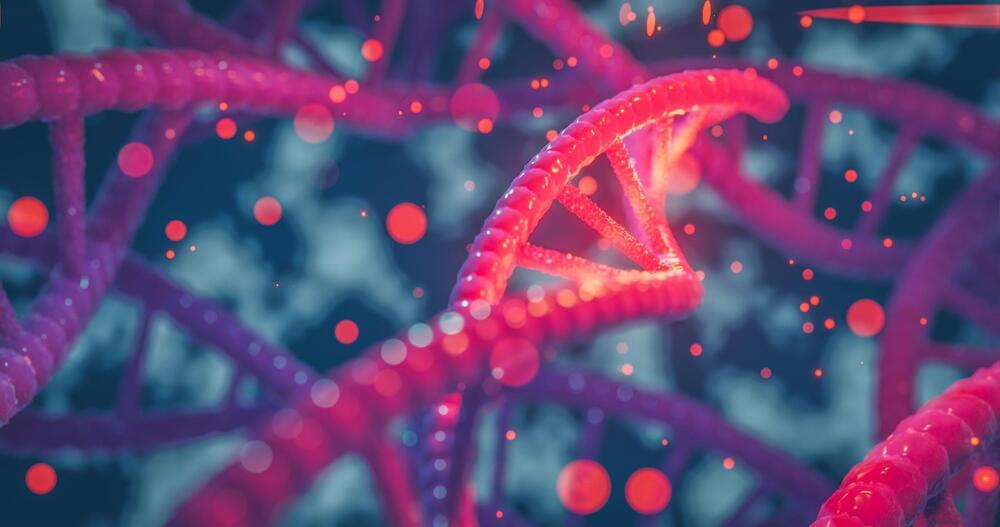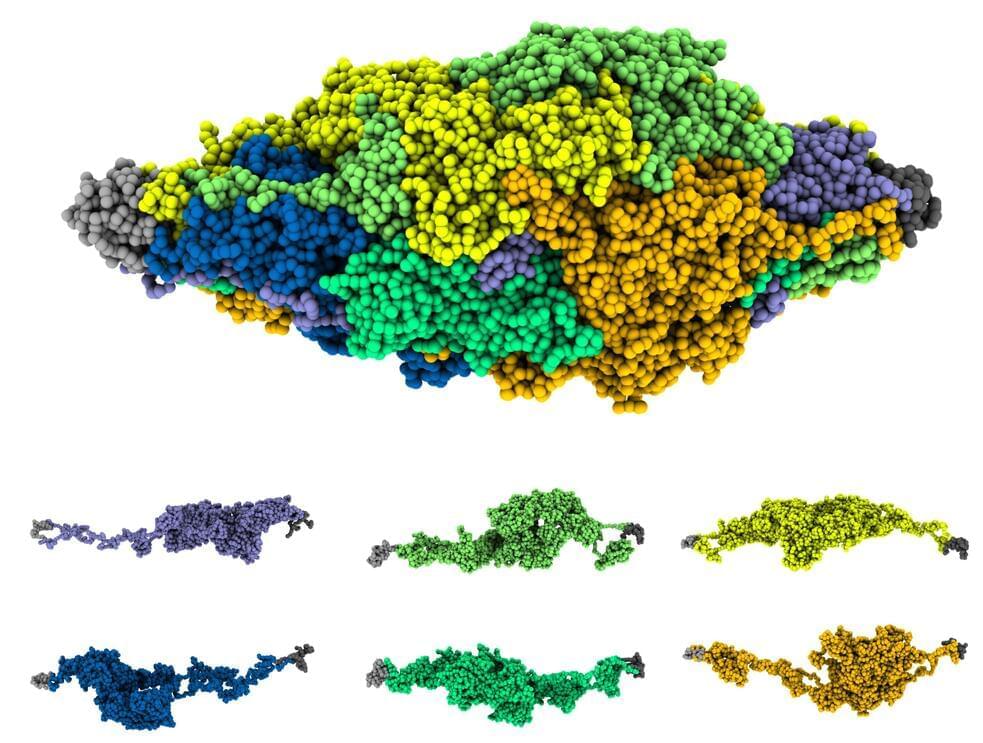Genome-wide studies have identified 27 risk loci associated with attention-deficit hyperactivity disorder and shown its genetic link with other psychiatric conditions.


Join us on Patreon!
https://www.patreon.com/MichaelLustgartenPhD
Discount Links:
NAD+ Quantification.
Use Code: ConquerAging At Checkout.
https://www.jinfiniti.com/intracellular-nad-test/
Green Tea.
https://www.ochaandco.com/?ref=conqueraging.
Oral Microbiome.
Use Code: ConquerAging15
https://www.bmq30trk.com/4FL3LK/GTSC3/
Epigenetic Testing.
CONQUERAGING!
https://bit.ly/3Rken0n.
At-Home Blood Testing.

When it comes to DNA, one pesky mosquito turns out to be a rebel among species.
Researchers at Rice University’s Center for Theoretical Biological Physics (CTBP) are among the pioneers of a new approach to studying DNA. Instead of focusing on chromosomes as linear sequences of genetic code, they’re looking for clues on how their folded 3D shapes might determine gene expression and regulation.
For most living things, their threadlike chromosomes fold to fit inside the nuclei of cells in one of two ways. But the chromosomes of the Aedes aegypti mosquito—which is responsible for the transmission of tropical diseases such as dengue, chikungunya, Zika, mayaro and yellow fever—defy this dichotomy, taking researchers at the CTBP by surprise.

Of the respondents, 28 percent said they were more likely than not to use gene editing to make their babies smarter, and 38 percent said they’d use polygenic screening. The researchers also noted what they called a bandwagon effect, where people who were told something along the lines of “everyone else is doing it” were more likely to say they’d do it too. This is logical; our comfort with decisions is buoyed by a sense that others in our shoes would choose similarly.
It’s important to note, though, that the survey made it clear that genetically enhancing embryos didn’t come with a guaranteed result of a smarter kid. “In this study, we stipulated a realistic effect—that each service would increase the odds of having a child who attends a top-100 college by 2 percentage points, from 3 percent to 5 percent odds—and lots of people are still interested,” said Michelle N. Meyer, chair of the Department of Bioethics and Decision Sciences at Geisinger and first author of the article.
The numbers—28 and 38 percent—don’t seem high. That’s a little below and a little above one-third of total respondents who would use the technologies. But imagine walking around in a world where one out of every three people had had their genes tweaked before birth. Unsettling, no? The researchers said their results point to substantial and growing interest in genetic technologies for offspring enhancement, and that now is the time to get a national conversation going around regulations.
Dr. Renee Wegrzyn, Ph.D. is the inaugural director of the Advanced Research Projects Agency for Health (ARPA-H — https://arpa-h.gov/), an agency that supports the development of high-impact research to drive biomedical and health breakthroughs to deliver transformative, sustainable, and equitable health solutions for everyone. ARPA-H’s mission focuses on leveraging research advances for real world impact.
Previously, Dr. Wegrzyn served as a vice president of business development at Ginkgo Bioworks and head of Innovation at Concentric by Ginkgo, where she focused on applying synthetic biology to outpace infectious diseases—including Covid-19—through biomanufacturing, vaccine innovation and biosurveillance of pathogens at scale.
Prior to Ginkgo, Dr. Wegrzyn was program manager in the Biological Technologies Office at DARPA, where she leveraged the tools of synthetic biology and gene editing to enhance biosecurity, promote public health and support the domestic bioeconomy. Her DARPA portfolio included the Living Foundries: 1,000 Molecules, Safe Genes, Preemptive Expression of Protective Alleles and Response Elements and the Detect it with Gene Editing Technologies programs.
Dr. Wegrzyn received the Superior Public Service Medal for her work and contributions at DARPA. Prior to joining DARPA, she led technical teams in private industry in the areas of biosecurity, gene therapies, emerging infectious disease, neuromodulation, synthetic biology, as well as research and development teams commercializing multiplex immunoassays and peptide-based disease diagnostics.
Dr. Wegrzyn holds doctorate and bachelor’s degrees in applied biology from the Georgia Institute of Technology. She was a fellow in the Center for Health Security Emerging Leaders in Biosecurity Initiative and completed postdoctoral training as an Alexander von Humboldt fellow in Heidelberg, Germany.

Students often sacrifice sleep to study for exams, but lack of sleep can negatively impact memory. Now, University of Groningen neuroscientist Robbert Havekes has found that sleep deprivation hinders recall, not retention of information. Havekes and his team used optogenetics and the drug roflumilast to make “hidden knowledge” obtained while sleep-deprived accessible again days later. Their findings were recently published in the journal Current Biology.
Havekes, associate professor of Neuroscience of Memory and Sleep at the University of Groningen, the Netherlands, and his team have extensively studied how sleep deprivation affects memory processes. “We previously focused on finding ways to support memory processes during a sleep deprivation episode”, says Havekes.
However, in his latest study, his team examined whether amnesia as a result of sleep deprivation was a direct result of information loss, or merely caused by difficulties retrieving information.

Monkeyflowers glow in a rich assortment of colors, from yellow to pink to deep red-orange. But about 5 million years ago, some of them lost their yellow. In the Feb. 10 issue of Science, UConn botanists explain what happened genetically to jettison the yellow pigment, and the implications for the evolution of species.
Monkeyflowers are famous for growing in harsh, mineral-rich soils where other plants can’t. They are also famously diverse in shape and color. Monkeyflowers also provide a textbook example of how a single-gene change can make a new species. In this case, a monkeyflower species lost the yellow pigments in the petals but gained pink about 5 million years ago, attracting bees for pollination. Later, a descendent species accumulated mutations in a gene called YUP that recovered the yellow pigments and led to production of red flowers. The species stopped attracting bees. Instead, hummingbirds pollinated it, isolating the red flowers genetically and creating a new species.
UConn botanist Yaowu Yuan and postdoctoral researcher Mei Liang (currently a professor at South China Agricultural University), with collaborators from four other institutes, have now shown exactly which gene changed to prevent monkeyflowers from making yellow. Their research, published this week in Science, adds weight to a theory that new genes create phenotypic diversity and even new species.

Seminar summary: https://foresight.org/summary/bioelectric-networks-taming-th…-medicine/
Program & apply to join: https://foresight.org/biotech-health-extension-program/
Foresight Biotech & Health Extension Meeting sponsored by 100 Plus Capital.
Michael Levin, Tufts Center for Regenerative and Developmental Biology.
Bioelectric Networks: Taming the Collective Intelligence of Cells for Regenerative Medicine.
Michael Levin, Distinguished Professor in the Biology department and Vannevar Bush Chair, serves as director of the Tufts Center for Regenerative and Developmental Biology. Recent honors include the Scientist of Vision award and the Distinguished Scholar Award. His group’s focus is on understanding the biophysical mechanisms that implement decision-making during complex pattern regulation, and harnessing endogenous bioelectric dynamics toward rational control of growth and form. The lab’s current main directions are:
• Understanding how somatic cells form bioelectrical networks for storing and recalling pattern memories that guide morphogenesis;
• Creating next-generation AI tools for helping scientists understand top-down control of pattern regulation (a new bioinformatics of shape); and.
• Using these insights to enable new capabilities in regenerative medicine and engineering.
Prior to college, Michael Levin worked as a software engineer and independent contractor in the field of scientific computing. He attended Tufts University, interested in artificial intelligence and unconventional computation. To explore the algorithms by which the biological world implemented complex adaptive behavior, he got dual B.S. degrees, in CS and in Biology and then received a PhD from Harvard University. He did post-doctoral training at Harvard Medical School (1996−2000), where he began to uncover a new bioelectric language by which cells coordinate their activity during embryogenesis. His independent laboratory (2000−2007 at Forsyth Institute, Harvard; 2008-present at Tufts University) develops new molecular-genetic and conceptual tools to probe large-scale information processing in regeneration, embryogenesis, and cancer suppression.
